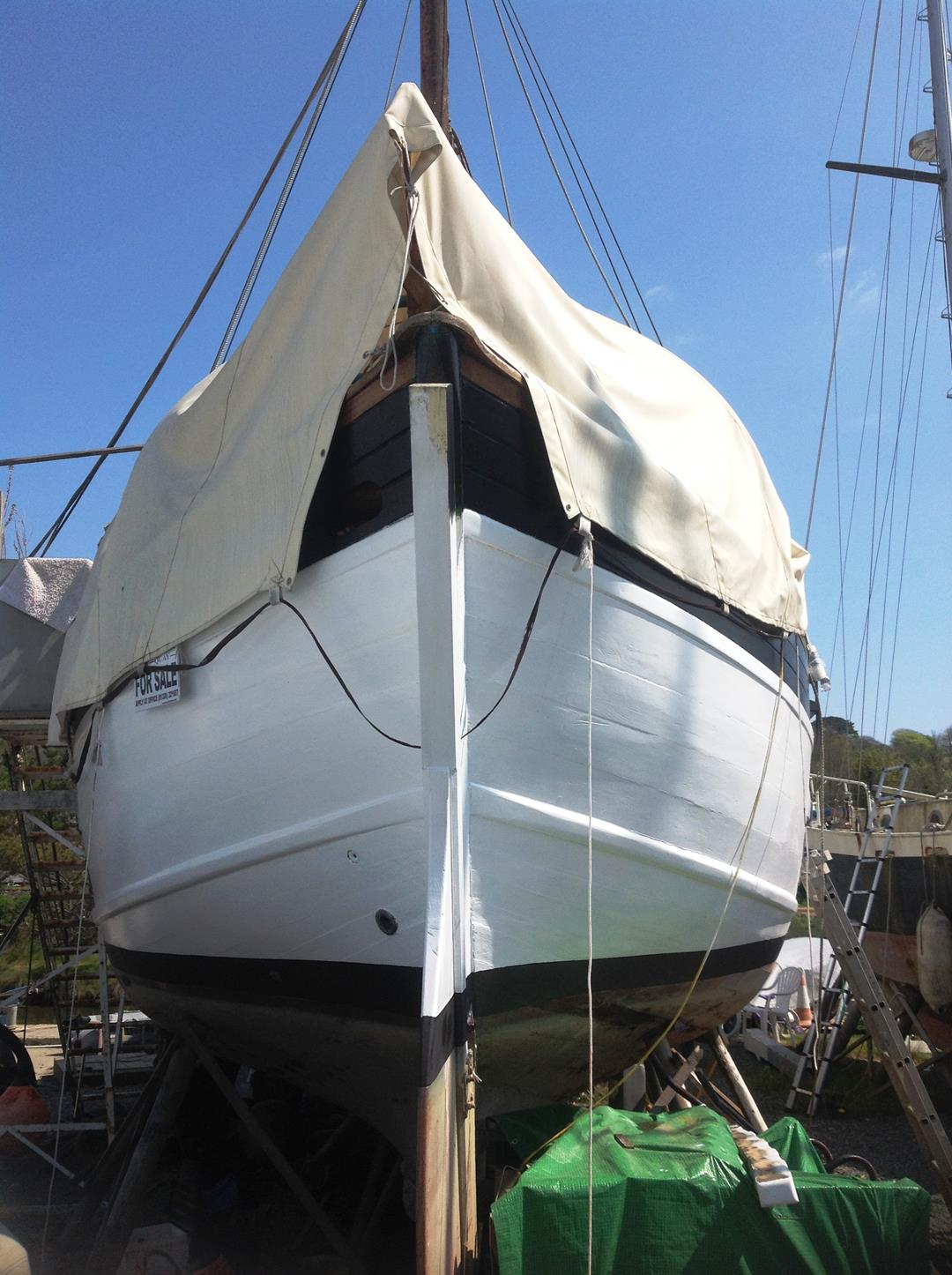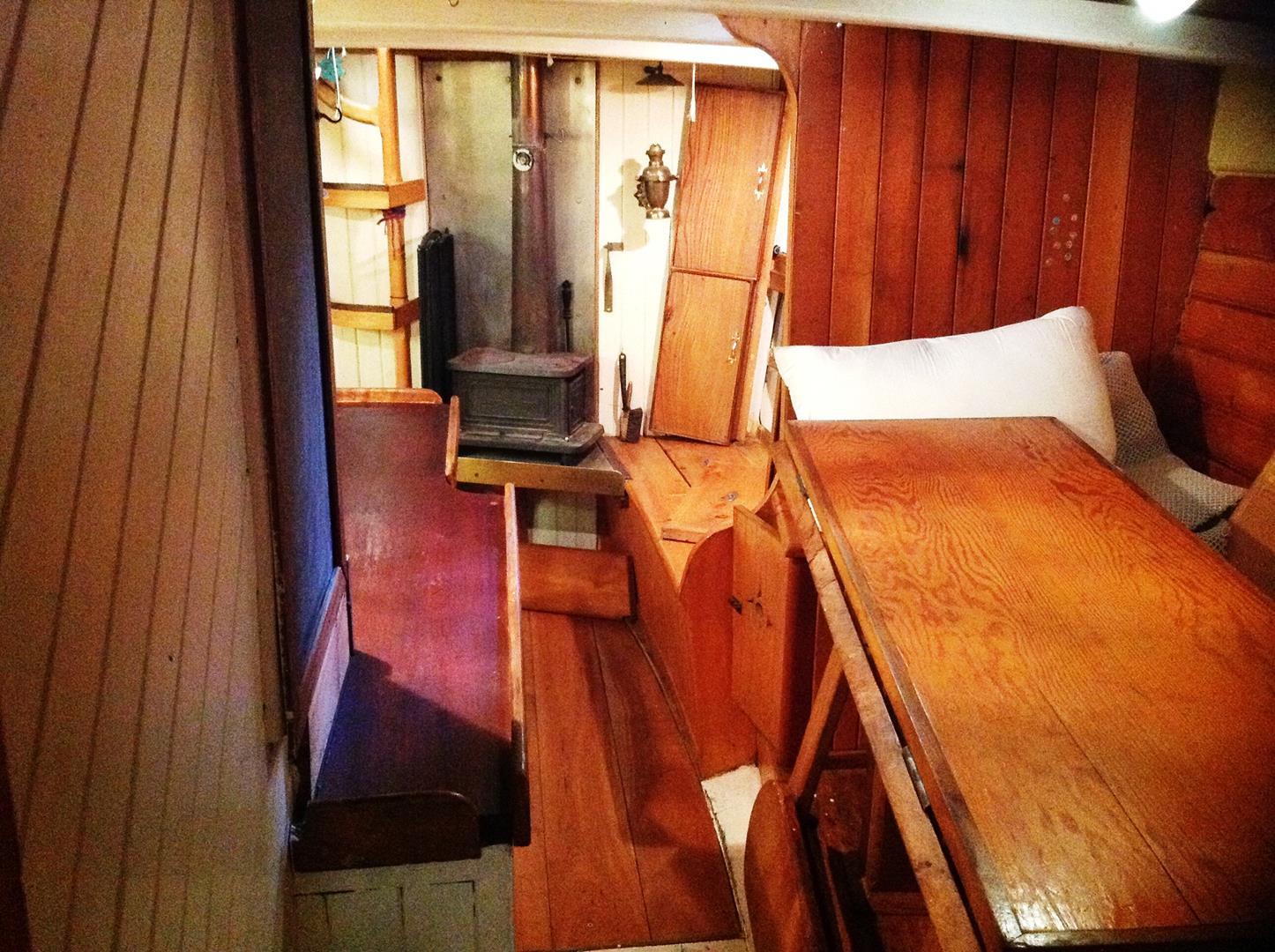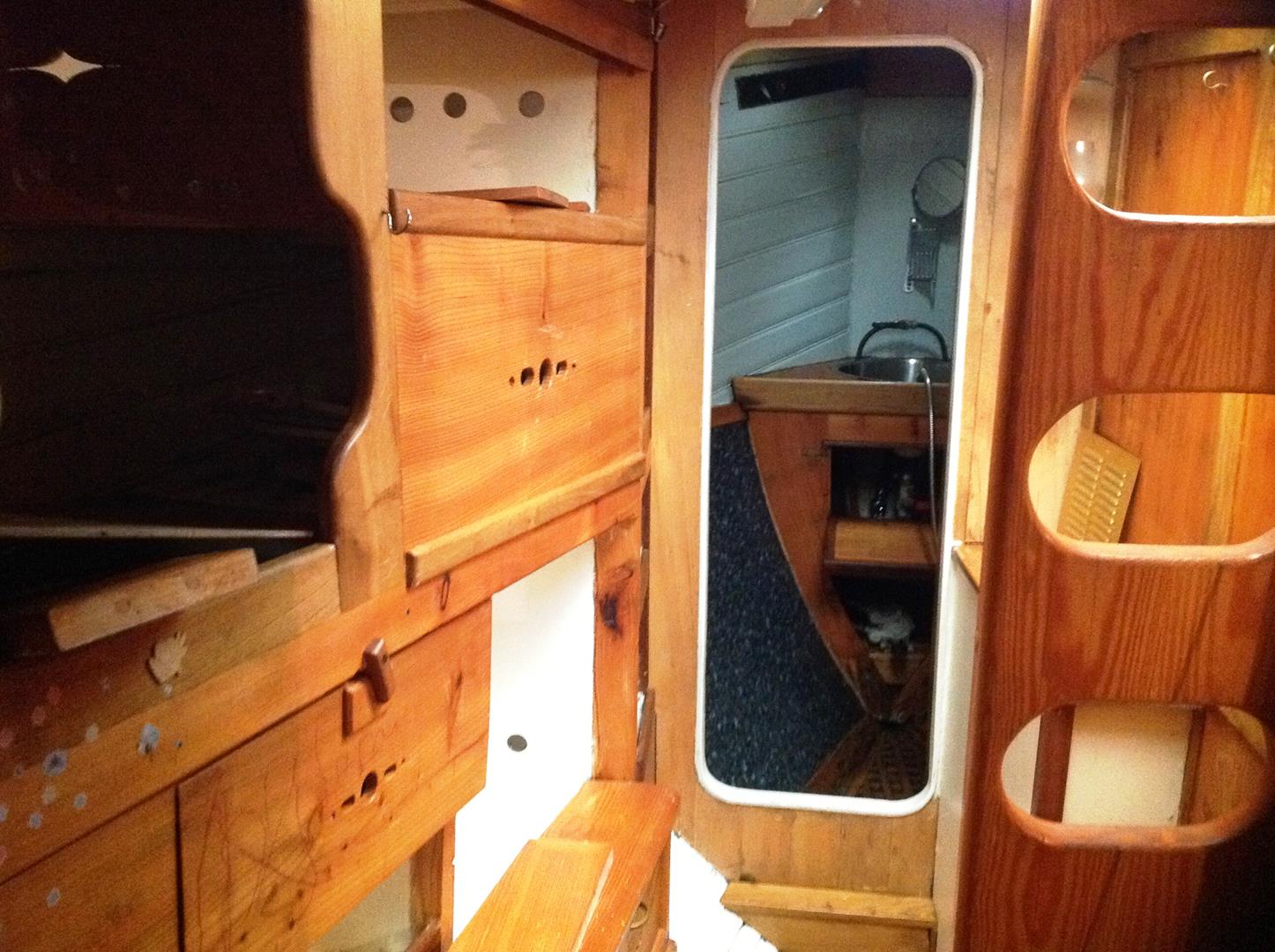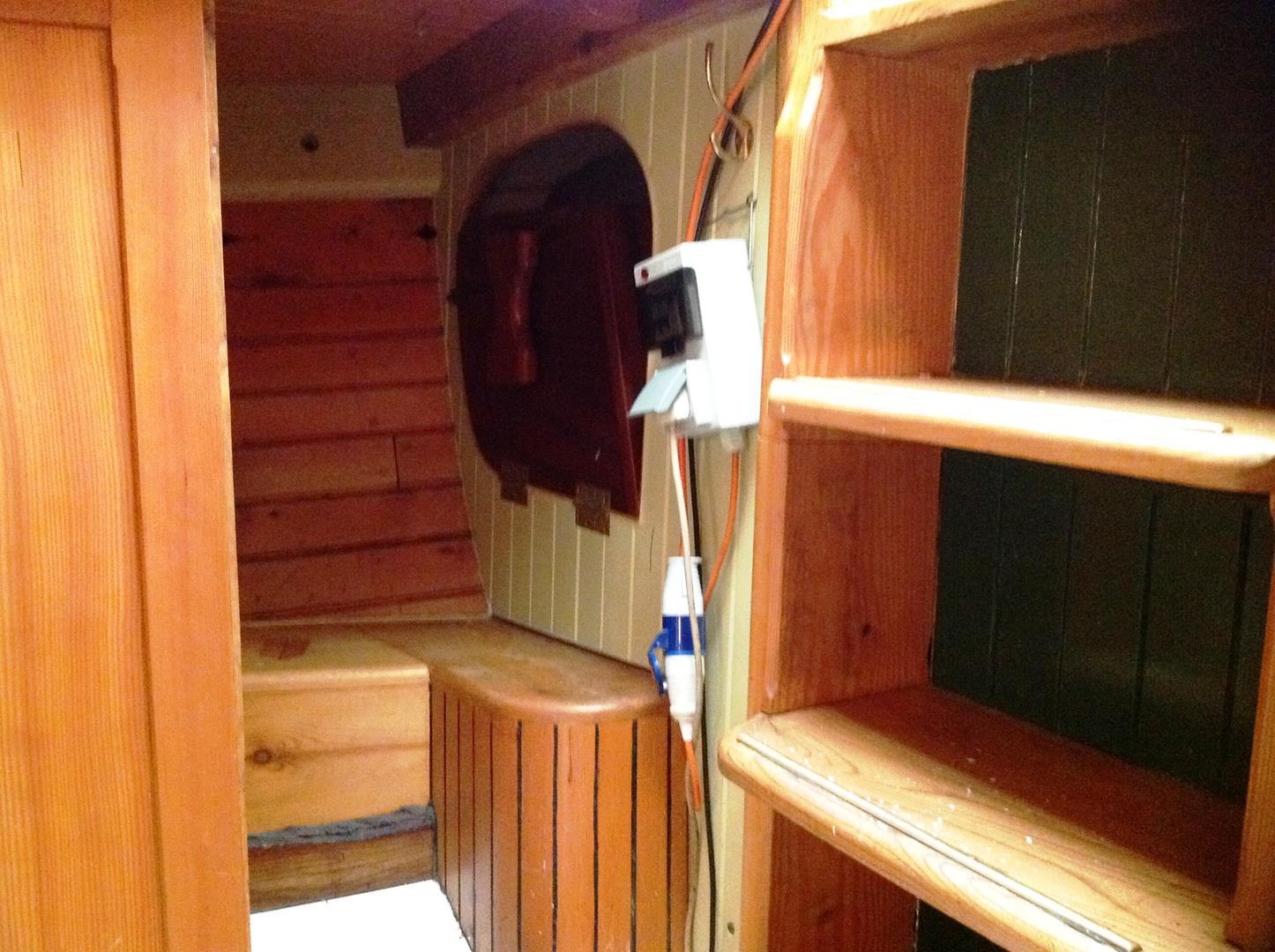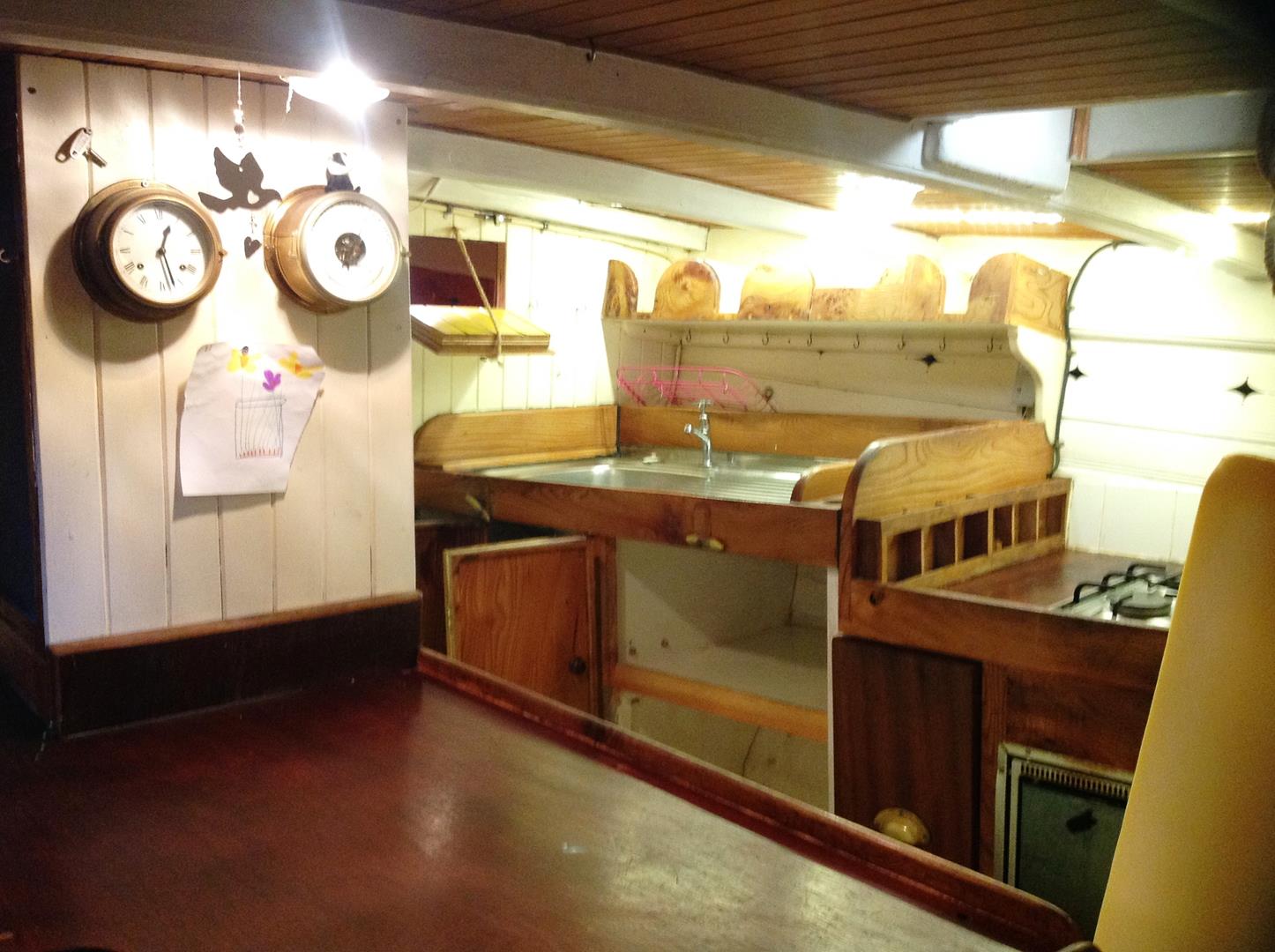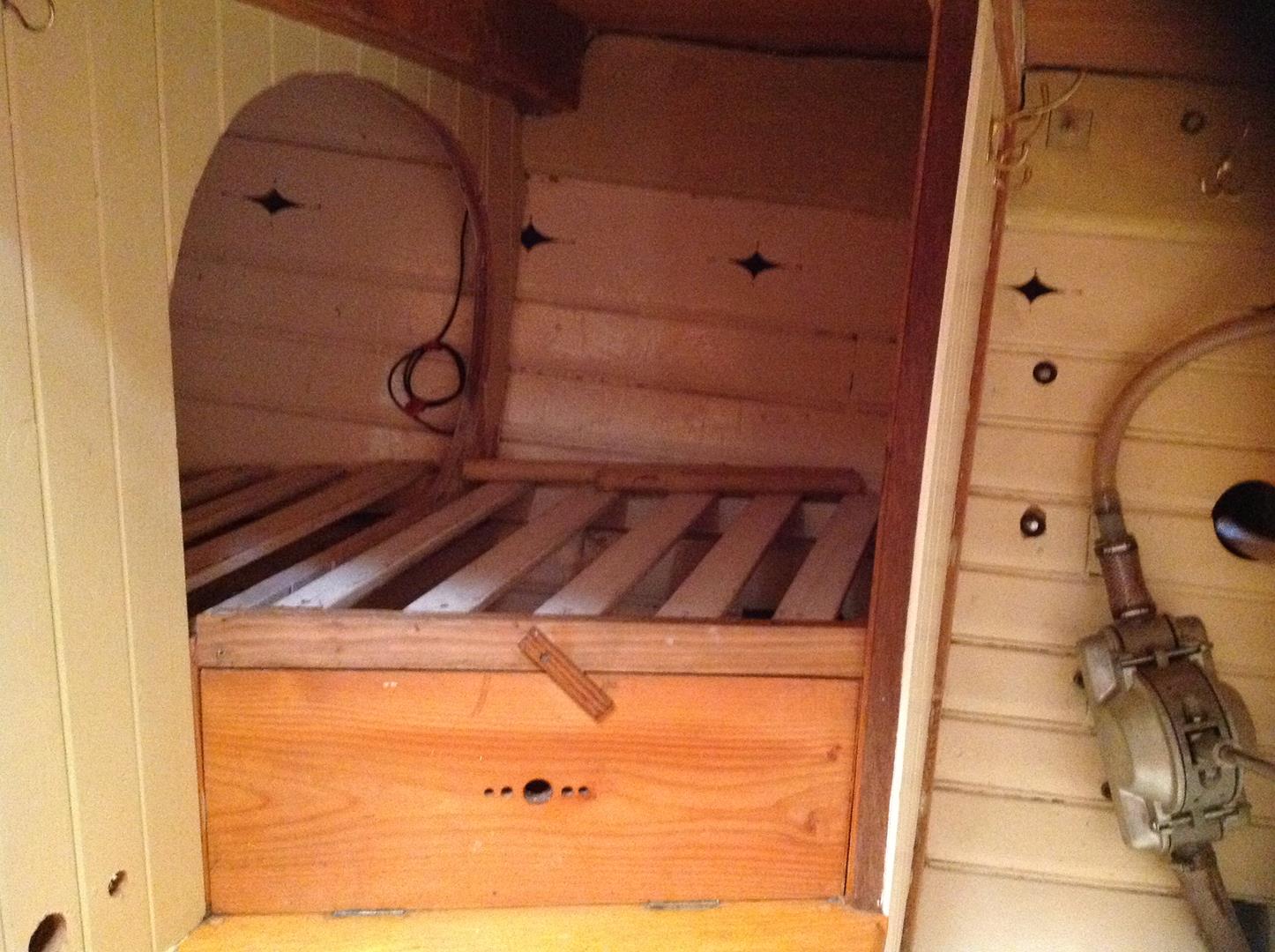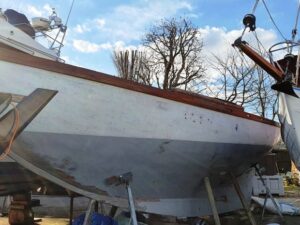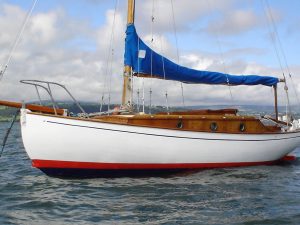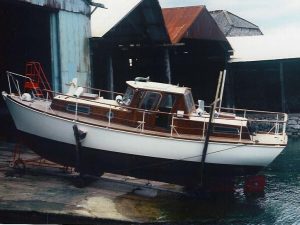HISTORY & DESCRIPTION:
The Fifie is a design of sailing boat developed on the East Coast of Scotland. It was a traditional fishing boat used by Scottish fishermen from the 1850s until well into the 20th century. These boats were mainly used to fish for herring using drift nets, and along with other designs of boat were known as herring drifters.
While the boats varied in design, they can be categorised by their vertical stem and stern, their long straight keel and wide beam. These attributes made the Fifies very stable in the water and allowed them to carry a very large set of sails. The long keel, however, made them difficult to manoeuvre in small harbours.
Sailing Fifies had two masts with the standard rig consisting of a main dipping lugsail and a mizzen standing lug sail. The masts were positioned far forward and aft on the boat to give the maximum clear working space amidships. A large Fifie could reach just over 70ft in length. Because of their large sail area, they were very fast sailing boats.
Fifies built after 1860 were all decked and from the 1870s onwards the bigger boats were built with carvel planking, i.e. the planks were laid edge to edge instead of the overlapping clinker style of previous boats. The introduction of steam-powered capstans in the 1890s, to help to raise the lugs sails, allowed the size of these vessels to increase from 30 foot to over 70 foot in length. From about 1905 onwards sailing Fifies were gradually fitted with engines and converted to motorised vessels.
There are few surviving examples of this type of fishing boat still in existence. The Scottish Fisheries Museum based in Anstruther, Fife has restored and still sails a classic example of this type of vessel named the REAPER. The Swan Trust in Lerwick, Shetland have restored and maintained another Fifie, SWAN, as a sail training vessel. She now takes over 1000 trainees each year and has taken trainees to participate in the CUTTY SARK Tall Ships Races to ports in France, Denmark, the Netherlands, Ireland as well as around the UK.
AMELIA ROSE was one of the last motor Fifies built to the traditional lines of the 19th Century, with the unmistakable straight stem, raked stern post and generous beam carried well aft. The current owner has carried out thorough restoration of the vessel over a period of 16 years. A move to Scotland now dictates a sale. Some finishing work required to the hull and rig.
Carvel larch planking on oak frames iron fastened. Oak backbone, Canadian Douglas Fir laid decks.
Traditional below decks accommodation fitted out in a purposeful style with pine joinery throughout.
From Foreward:
Heads Compartment, pump out marine wc, wash basin and shower.
Fore Cabin with double berth to starboard and single berth to port. Athwartships bulkhead with access to:
Saloon with dining area to port, settee / double berth to starboard quarter. Solid fuel stove.
Galley, situated to the starboard side of the saloon with four-burner gas cooker, large stainless steel sink unit. Six pantry lockers, Smeg oven and grill, two fire extinguishers. 90-gallon freshwater tank.
Aft cabin with single berths to port and starboard, second heads and navigation area to starboard.
50hp FORD DIESEL ENGINE, reconditioned in 2000. 65-gallon fuel tank. Three batteries replaced 2012.
GAFF KETCH RIG:
Keel stepped Douglas Fir masts, 35ft main, 28ft mizzen. 18ft bowsprit. Six terylene sails, traditional rope and wire rigging, replaced about 2012.
INVENTORY:
- Garmin GPS
- VHF Radio
- Raymarine Sounder
- Walker Log
- Hand-bearing Compass
- Traditional Navigation Lights
- Many Charts
- Two Fisherman Type Anchors
- Two Bilge Pumps
- Plastimo Tender
- Fenders & Warps
HISTORIC REGISTERED VESSEL – 2713
GUIDE: SOLD – May 2019
VIEWING: Through CLASSIC YACHT BROKERAGE
LYING: Cornwall



